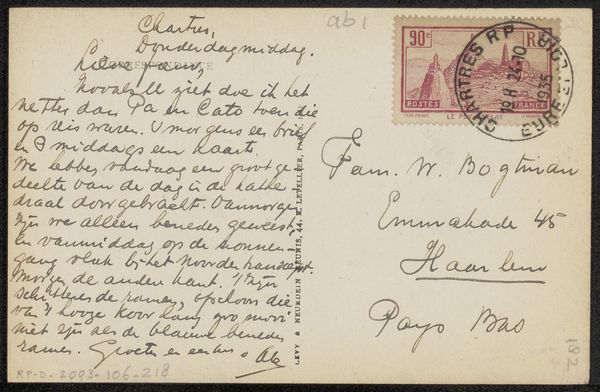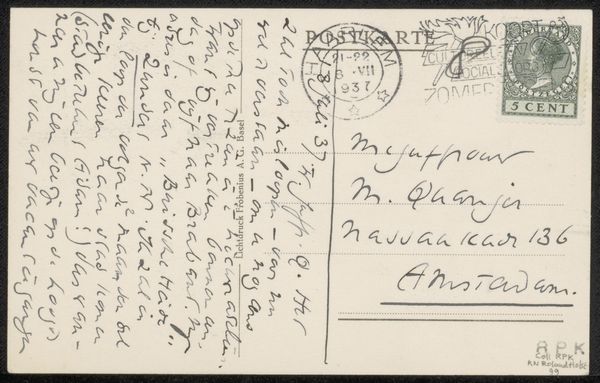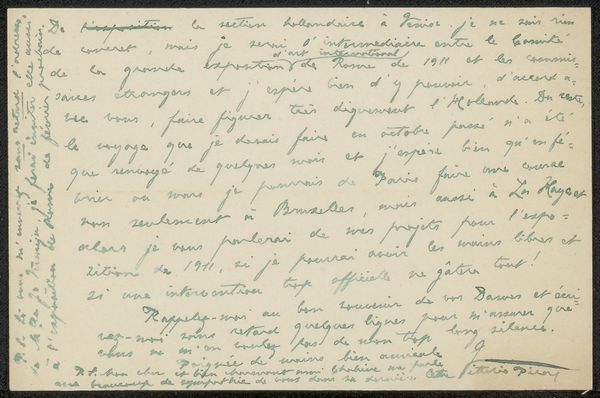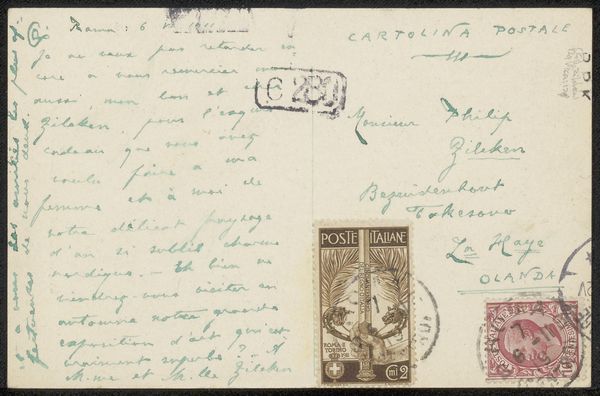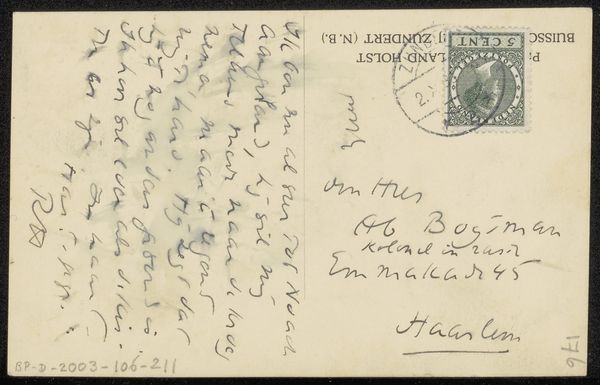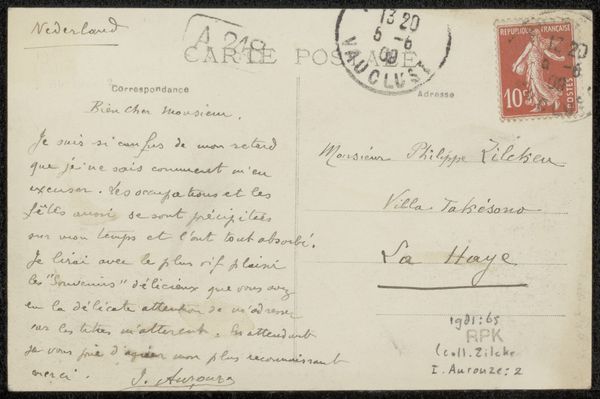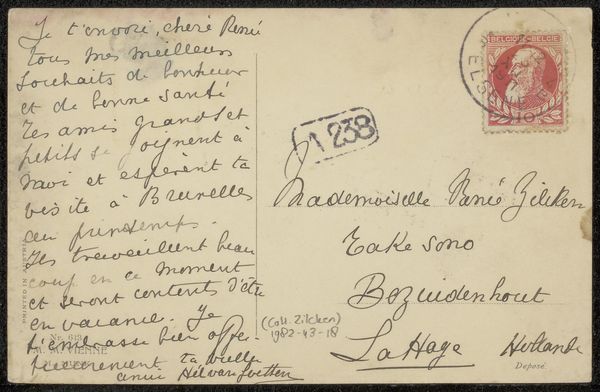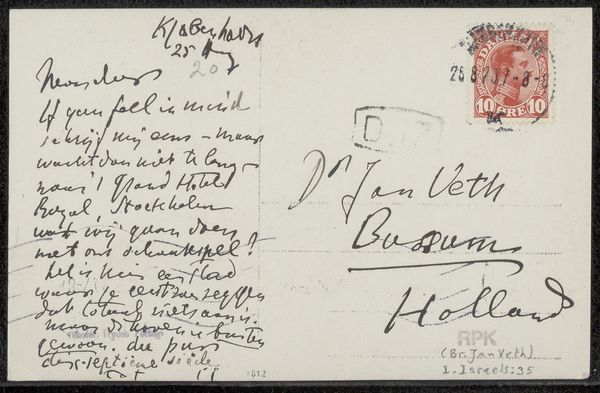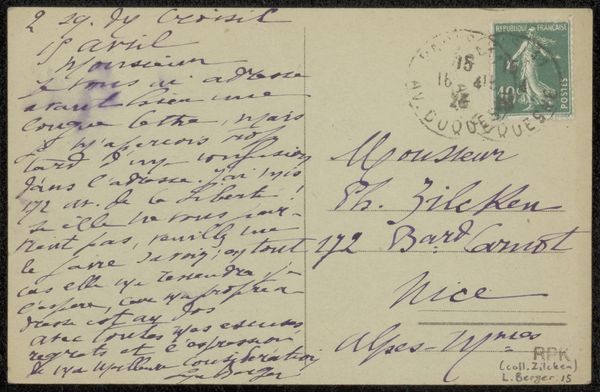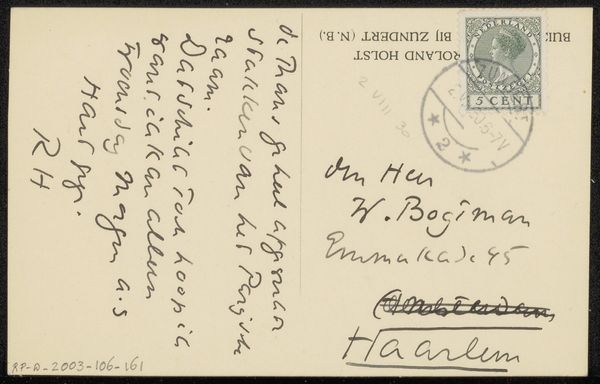
drawing, print, linocut, ink
#
portrait
#
drawing
#
art-nouveau
# print
#
linocut
#
ink
#
linocut print
#
pen work
Copyright: Rijks Museum: Open Domain
Curator: The work we are looking at is "Brief aan Philip Zilcken", possibly from 1909, by Vittorio Pica. It's a print—specifically, it seems to be a linocut, with some additional pen work—accompanied by handwriting. Editor: The immediate feeling is one of intimacy. It looks handmade, a personal message rather than a polished artwork intended for broad consumption. Curator: Precisely. Pica was an influential figure in the Art Nouveau movement, known for his writing and promotion of modern art. This piece encapsulates that movement’s emphasis on craftsmanship and the handmade, challenging the separation between fine art and applied arts. We see an almost medieval rendering alongside the text as if this was a traditional scribe's page. Editor: So, we’re not just dealing with the image, but the entire object as a means of communication. The weight of the paper, the quality of the ink... these are all deliberate material choices that underscore a dedication to artisanal techniques. What does it mean, materially, to have sent a hand-printed message in a time of mass communication? Curator: Exactly. The content of the letter then becomes crucial. The handwriting reveals much about the author’s state of mind, his concerns, and the immediacy of his communication, all of which provide the subtext to a moment in time. The naked person, is it art? Eros? Is it the truth being sent, 'uncovered'? The work, read this way, is full of nuance. Editor: The color choices are also compelling, particularly that reddish-brown tone. The figure strikes me as more than decorative; its nudity suggests both vulnerability and a claim to art. I do find the choice of this rather primitive print to illustrate the letter surprising given the subject is meant to be Art Moderne. Curator: True. Though "Art Moderne," even now, embraces both the handmade and machine-made aesthetic in equal parts. It speaks, perhaps, to a larger artistic crisis— the anxiety over originality in an era of mechanical reproduction. This print shows its cuts, flaws, like woodmarks of printing techniques gone by. It's the mark of 'true art'. Editor: That anxiety makes this small token even more potent; the image, a 'slip', makes for a statement and, taken materially, elevates its status into more than just a piece of communication to becoming art. Curator: It certainly complicates our understanding of value, authorship, and authenticity in the early 20th century. And helps us look back at its time more broadly. Editor: Indeed, and to see art through its materiality.
Comments
No comments
Be the first to comment and join the conversation on the ultimate creative platform.

